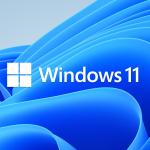What Is Edge Computing?
The IT world includes an ever-expanding list of terms and acronyms we mere mortals trying to run a business mostly struggle to comprehend. A bit like space really, but for now let’s not get sidetracked by these things (such as the “Metaverse” Facebook and other tech giants are conjuring up). We’ll stick with Edge Computing for now.
Edge Computing is just one of those new(ish) ideas that are actually going to make a difference to those of us living and working in regional Australia, and here’s why:
A tale of two cities
Large data centres in the major cities service the client base that exists there. Major fibre connections run between our capital cities, making for fast, large-scale computing. A large data link runs along the Pacific Highway from Sydney to Brisbane, so the two cities are well connected. However, here on the Mid-North Coast, this data link bypasses us and stops at Coffs Harbour, and then doubles back to Port Macquarie. This infrastructure design creates latency (or “lag” if you’re talking to your teenage gamer-kids).
If the server you are connected to is in Sydney, the data package leaves us and goes to Coffs Harbour. It then hops down to Sydney over multiple connections, then comes back again via the same route. As a result, it takes too long. This is why voice traffic (phone calls via the internet) can sometimes be a hit-and-miss experience. Typical symptoms can be garbled sounds, missed words or even total call dropouts.
People in regional areas like to binge-watch, too!
Edge Computing is a topology and location-sensitive form of distributed computing. In a nutshell, it delivers fast fibre connections closer to end-users, thus reducing latency. Streaming video or gaming services such as Netflix, Disney Plus, Xbox Live or Apple TV are good examples. Having their infrastructure being physically closer to you via optical fibre can vastly improve the experience. Edge Computing is basically a mini data centre supplying faster connectivity to a specific region.
Back to Business
Obviously, it’s not all about entertainment. Applications such as Zoom, Microsoft Teams, WhatsApp and other services are now seen as critical for most operations, in addition to voice traffic, cloud-based applications and email. Edge Computing will require fewer data “hops” to major city-based data centres for a better service outcome to a particular region.
Does that makes sense, or should we try to discuss the Metaverse idea?






